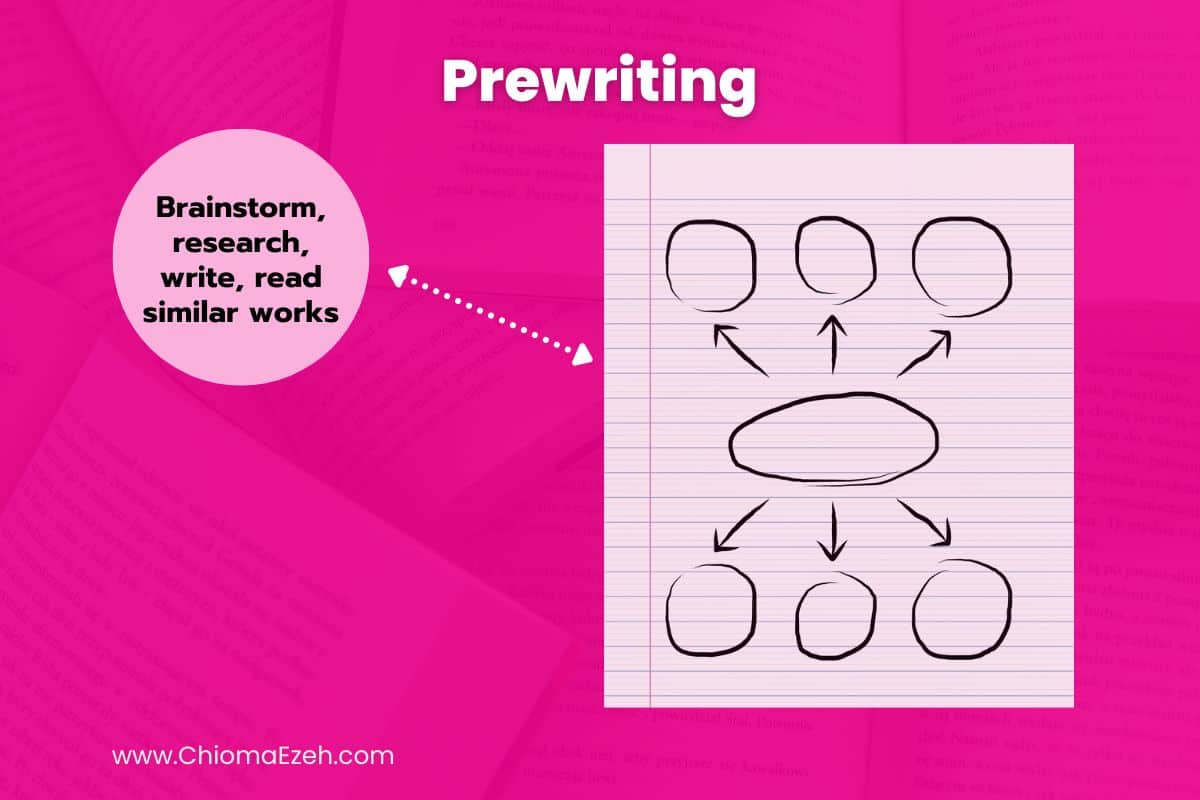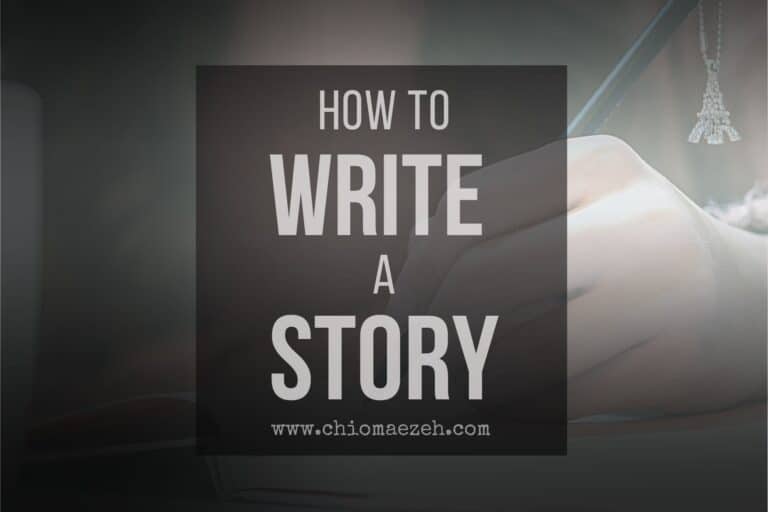Prewriting Checklist: How To Use Prewriting to Jumpstart & Improve Your writing process
Writing can be a daunting task for even the most seasoned writers.
Whether it’s a story, a play, an article, essay, or a blog post, getting words on paper (or screen!) isn’t always easy. But there is one secret weapon all writers have in their arsenal that can make writing easier and more enjoyable. And that is prewriting.
Prewriting is like having your very own personal assistant who helps you organize your thoughts before you actually start writing.
It’s an invaluable tool that will help jumpstart any creative project and take some of the stress out of the writing process – which means more time to sit back with a cup of tea and bask in the glory of your finished work!
So let me tell you how it works with our prewriting checklist below…
Let’s Talk
Are you a writer aspiring to pen a masterpiece that never fails to captivate? Look no further. Reach out to us and uncover how we can help you to take your writing to unprecedented heights!

What is Prewriting and How Can It Improve Your Writing Process?
Prewriting is the process of gathering and organizing your thoughts before you actually start writing. It involves brainstorming ideas, jotting down notes, and creating an outline that will serve as the roadmap for your project.
This helps to structure your thoughts in a logical order and ensures that none of your ideas are forgotten or overlooked.
When you prewrite, you’ll also be able to identify potential problems with your work before they become an issue.
For example, if you’re writing a short story and realize that one of your points doesn’t quite fit within the context of the piece, it’s easier to make adjustments during the prewriting phase than while you’re actually putting words on the page of your first draft.
Prewriting also helps to make writing more enjoyable. Instead of staring at a blank page and feeling overwhelmed, prewriting gives you a starting point that makes it easier to get started. You can focus on one step of the process at a time without feeling overwhelmed and eventually, you’ll have a complete piece that you can be proud of.
👉 To learn more, check out our guide: 15 Benefits of Prewriting for Writers at all levels
Prewriting Checklist: How to Use Prewriting To Improve Your Writing Process
Now that you know the benefits of prewriting, it’s time to get started!
If you don’t know what the prewriting techniques are, head over to this guide. Check it out and then come back to this step so you can better understand what the prewriting process looks like and move forward with it.

The first step of the prewriting process is to gather your thoughts and ideas. Take a few minutes to brainstorm, jot down notes, and make lists of everything that comes to mind related to your subject matter. This can include certain kinds of research and facts you might need for your piece or any new angles.
Here are 10 tips to use prewriting to jumpstart and improve your writing process:
1. Clarify your purpose and audience
Before you start writing, it’s important to determine your purpose and audience. Think about who will be reading your work and why they might be interested in it. Clarifying this information can help you focus on the most important aspects of the topic and concentrate on the details that are relevant to your audience.
2. Brainstorm ideas.
Start by brainstorming any and all possible ideas related to your topic – even if they seem far-fetched at first! This will get the creative juices flowing and start the thinking process that leads to great writing.
3. Create an outline.
Once you’ve got a few ideas, create a basic outline that will serve as the roadmap for your writing. This helps you stay on track and keep your thoughts organized while you write.
4. Research relevant topics.
Use any resources at your disposal to find out more about the topic you’re writing about – books, articles, websites, interviews, conversations with experts etc. This will give you a better understanding of the subject and provide you with material to draw from.
5. Jot down notes.
Keep a notebook or document handy to jot down any ideas that come to you while prewriting – no matter how random they may seem. You never know when something will spark an idea for your writing!
6. Ask questions.
Before you start writing, ask yourself some questions about the topic you’re writing on – What is the main point? Who is my audience? What do I want to accomplish with this piece of writing? Once you’ve answered these questions, it will be easier to write with purpose and clarity.
7. Make a web or mind map.
Making a visual representation of your ideas can be really helpful in organizing them and forming connections between different concepts.
8. Create a storyboard or timeline of events.
Storyboarding is a great way to visualize the progression of events in your writing. By drawing out each scene or step on paper, you can better plan and organize your project. This also helps you make sure that everything flows logically and follows a clear path.
9. Freewrite to explore ideas
Freewriting is a great way to explore your ideas further. This technique involves writing down whatever comes to mind without worrying about grammar or structure. It’s a good exercise for generating new thoughts and making connections between them. Try freewriting for 10-15 minutes each day, and see how it helps you.
10. Take a break.
Writing can be exhausting and it’s important to take time out to recharge. Take a break and come back with a fresh perspective, ready to tackle the writing process again.
11. Read through your work.
Once you’ve finished prewriting, read through it and make any necessary changes or adjustments. This is also a great time to delete any sections that aren’t relevant to the topic at hand.
12. Start writing.
Finally, it’s time to start putting your words on paper (or screen!). With prewriting out of the way, you should have a clear understanding of the direction your writing needs to take and what it needs
13. Use visuals to help you organize your thoughts
Visuals are a great way to organize your ideas and help you stay focused. They can also provide inspiration while prewriting, as they often make abstract concepts easier to understand.
You can use diagrams, graphs, word webs, storyboards or even just doodles to brainstorm potential topics and create a plan of action for writing. Visuals can help you keep track of your thoughts and make connections between ideas. So, be sure to use visuals when prewriting to get the most out of your writing process.
👉 Check out our guide on How To Use Visuals To Outline Your Story. where we discuss in more detail, with examples to help you get started.
Keep in mind that prewriting is not a one-time activity. It should be used throughout your writing process to ensure that you develop an accurate, well-structured project. So, take the time to plan ahead and use prewriting techniques before starting any writing assignment.
For more additional tips, head over to this guide on Prewriting tips to jumpstart and Improve your prewriting process.
How Can You Develop A Personal Approach To Successful Prewriting?
Developing a personal approach to successful prewriting requires some practice and experimentation. Everyone has different techniques and methods that work best for them, so you should find out what works best for you.
Think about the type of writing you do and how much time you have available for each project. For example, if you’re a novelist, you might need to spend more time brainstorming ideas than someone who does mostly short stories.
Another important consideration is to be organized. Have a plan for how you want to approach your project and make sure to stick to it. If I had to prepare to write a book, I would make sure to have a timeline. I feel like having a timeline helps me stay focused and prevents me from procrastinating.
Also, don’t be afraid to experiment. If something isn’t working, try a different tactic or technique and see if that works better for you. Personally, I notice that I work best when I freewrite, so that’s what I do before actually drawing an outline. Some others may find that they prefer to outline first and then dive into writing.
Whatever the approach, as you become more familiar with the process, you will find out what works best for you and be able to develop a successful prewriting approach.
Overall, prewriting is super important, so take the time to properly prepare and plan. This will result in a much better outcome, and get the most out of your writing process.
Additional tips for developing a personal approach to successful prewriting include:
- Set realistic goals and expectations that you can easily achieve.
- Create a schedule to help keep yourself on track.
- Break down large tasks into smaller, more manageable pieces.
- Take breaks when needed to stay focused and motivated.
- Mix up your environment if it helps with creativity and focus.
- Experiment with different writing styles until you find one that works for you.
- Use feedback from others to help shape your process
Final Notes on using Prewriting to improve the writing process
The prewriting process can seem overwhelming, but it doesn’t have to be. Taking the time to plan and organize your thoughts before you start writing will help ensure that you create a more organized piece of work that will save you time in the long run.
You’ll also be able to identify any issues with your work before it’s too late, allowing you to make the necessary adjustments and create a piece that you can be proud of. So don’t be afraid to take the time to prewrite – it just might be the secret weapon in your writing arsenal!
Related Reading:
- How to Write for a Lay Audience: 10 Steps To Craft An Engaging Piece
- Audience In Writing: A Simple Guide for Writers & Authors
- How To Identify Your Audience In Writing: 12 Simple Steps
- Types of Audiences In Writing [Explained]
- 15+ Prewriting benefits for writers of all levels
- How To Find Your Writing Voice (Expert Tips For Signature Style)
- What is Prewriting in Writing Process? [Explained]

![What Is Brainstorming in Writing? [Explained For Writers & Authors]](https://chiomaezeh.com/wp-content/uploads/2023/02/What-is-brainstorming-in-writing-768x512.jpg)

![What is Dialogue in a Story? [Meaning, Types, Examples]](https://chiomaezeh.com/wp-content/uploads/2023/03/dialogue-in-a-story-1-768x512.jpg)
![What Is Gore In Horror Writing? [Definition, Examples]](https://chiomaezeh.com/wp-content/uploads/2023/05/what-is-gore-in-horror-1-768x512.jpg)

